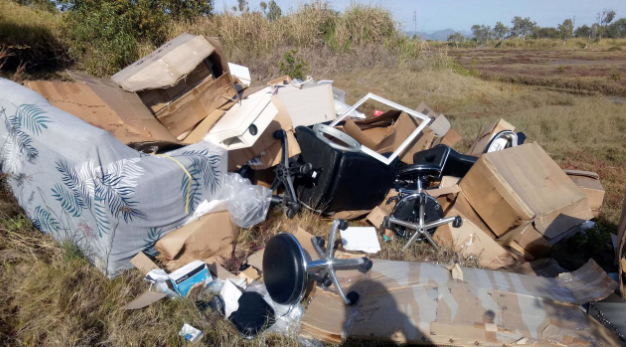Impact of Improper Waste Disposal on Human Health and Environment | Industrial Recycling Solutions

Improper waste disposal presents significant challenges to both human health and the environment, necessitating immediate attention from businesses. Mismanagement of waste leads to contaminated water sources, polluted air, degraded soil, and increased health risks.
According to the National Waste Report 2020, Australia generated 61.5 million tonnes of core waste in 2018-19, marking a 7.3% increase over two years. Industries such as construction, demolition, and commercial sectors are major contributors, with plastics posing substantial challenges.
Advancements in recycling technologies offer effective solutions for businesses aiming to reduce their waste footprint and promote sustainability. These technologies enhance waste sorting, convert waste into valuable products, and facilitate material reuse, thereby mitigating environmental impact.
Defining Improper Waste Disposal
Improper waste disposal occurs when waste is not managed according to established protocols, leading to environmental and health issues. This includes:
- Illegal Dumping Discarding waste in unauthorised locations, such as plastic bottles in waterways, construction debris on vacant land, or hazardous chemicals into drainage systems.
- Neglecting Recycling Failing to recycle materials like paper, cardboard, plastics, and metals that are suitable for reuse, resulting in unnecessary landfill accumulation.
- Mishandling Hazardous Materials Improper disposal of items such as batteries, paints, chemicals, and electronic waste containing toxic substances.
- Overloading Landfills Exceeding landfill capacities leads to the leaching of harmful substances into soil and groundwater, causing foul odours and greenhouse gas emissions.
Such practices contravene regulations like the Waste Avoidance and Resource Recovery Act 2001 and the Environmental Protection Act 1994, adversely affecting air, soil, and water quality.
Consequences of Improper Waste Disposal
- Water Contamination Disposal of waste containing chemicals, oils, and heavy metals into water bodies contaminates drinking water and seafood, posing long-term health risks such as cancer, hormonal disruptions, and kidney damage. Additionally, industrial effluents deplete oxygen levels in water, harming aquatic ecosystems.
- Air Pollution Burning industrial materials releases pollutants like dioxins, furans, and volatile organic compounds (VOCs) into the air, leading to respiratory issues, eye irritation, and increased cancer risk, particularly among vulnerable populations.
- Soil Degradation Improper disposal of heavy metals and toxic chemicals results in soil contamination, affecting agriculture as crops absorb harmful toxins, which can lead to health issues upon consumption.
- Disease Proliferation Accumulated waste creates breeding grounds for disease-carrying vectors like mosquitoes and rodents, increasing the risk of diseases such as malaria, dengue, and leptospirosis.
- Wildlife Endangerment Industrial waste contaminates ecosystems, leading to poisoning, habitat destruction, and disruption of food chains for both terrestrial and aquatic wildlife.
- Climate Change Acceleration The decomposition of organic waste in landfills emits methane, a potent greenhouse gas that exacerbates global warming, contributing to extreme weather events and biodiversity loss.
Industrial Recycling Solutions
Implementing proper industrial waste recycling can mitigate these issues through:
- Organic Recycling Organic recycling helps convert bio-waste into compost or biogas, enriching the soil and providing renewable energy while reducing landfill waste.
- Metal Recycling Reprocessing metals like aluminium and steel conserves natural resources and reduces environmental pollution associated with mining.
- Plastic Recycling Repurposing plastics into new products through plastic recycling decreases environmental degradation and conserves resources.
- Chemical Recycling Breaking down complex materials into their molecular components facilitates the production of new products, reducing reliance on virgin materials.
- E-Waste Recycling Recovering valuable metals from electronic waste conserves resources and prevents environmental contamination.
- Waste-to-Energy (WTE) Converting non-recyclable waste into energy reduces landfill use and provides alternative energy sources.
- Zero-Waste Initiatives Designing processes that minimise waste generation and prioritise reuse, recycling, and composting supports sustainable industrial practices.
- Industrial Symbiosis Collaborative utilisation of by-products among industries reduces waste and raw material consumption.
- Advanced Waste Sorting Technologies Employing technologies like optical sorting, magnetic separation, and conveyors for waste management enhances recycling efficiency, even in mixed waste streams.
- Closed-Loop Recycling Systems Recycling materials back into the same product reduces the need for new raw materials, promoting a circular economy.
Conclusion
Improper waste disposal poses significant threats to human health and the environment. By adopting comprehensive recycling and waste management strategies, businesses can play a pivotal role in mitigating these risks and fostering a sustainable future.